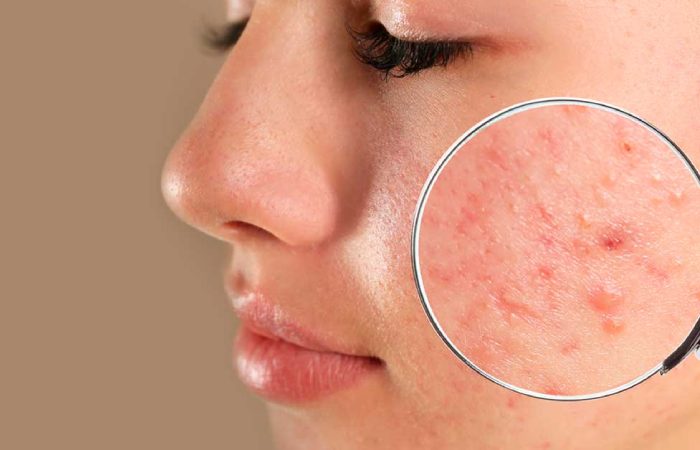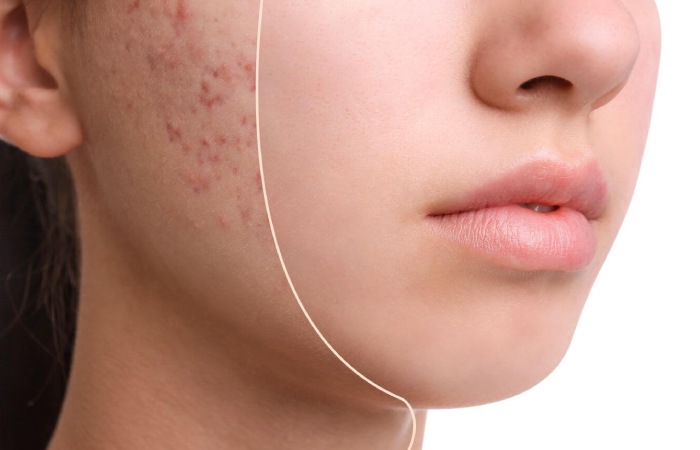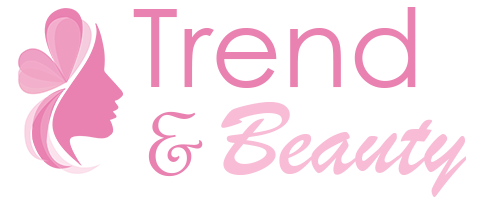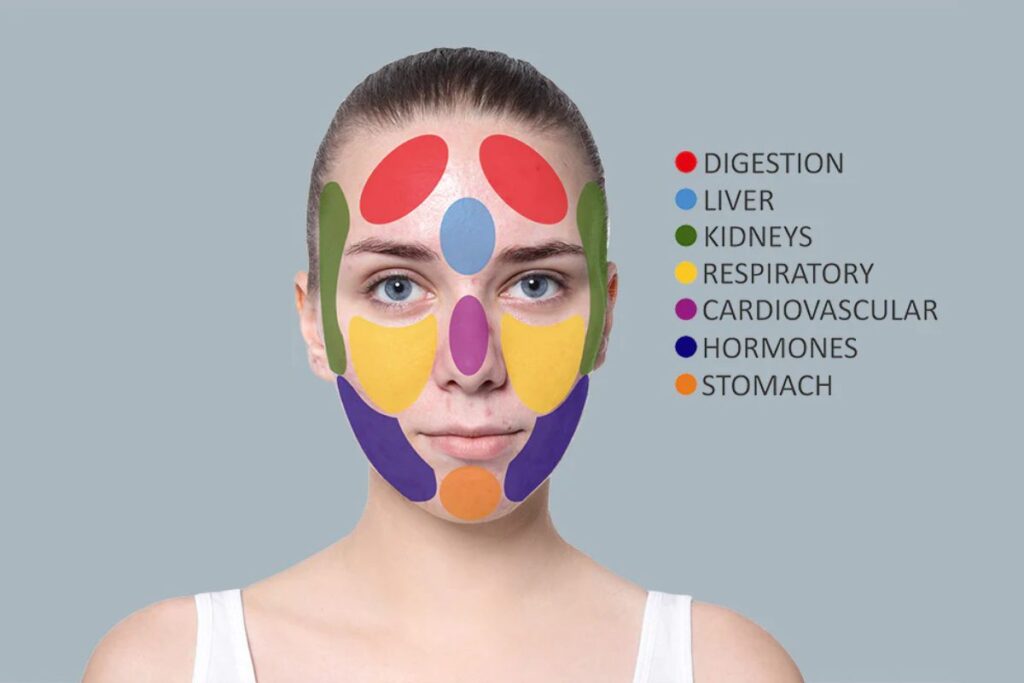Different parts of your face—your cheeks, chin or jawline, forehead, and T-zone—can tell you a lot about the cause of your acne.
The location of pimples can give you an idea of what’s going on inside your body. For example, breakouts could mean your hormones are changing, just like before your period.
You may notice that pimples tend to appear in the same places over and over again, such as on the cheeks, chin or jaw, forehead, and T-zone. This guide will help you know the possible causes of acne on different parts of the face and effective treatments.
What Causes Acne?

Bacteria, excess sebum, and dead skin cells clog the sebaceous glands, causing acne. Your sebaceous glands produce sebum (oil). There are different types of acne, including blackheads, cysts, pimples, warts, and whiteheads.
There are several reasons why you may have acne, such as:
- Some hair and skin care products: are non-comedogenic Products, meaning they contain ingredients that clog pores and increase the risk of acne.
- Hormonal changes: Hormonal changes instigated by the menstrual cycle, pregnancy, or menopause can cause more acne than usual. If you have recently started or stopped taking various forms of birth control, you may experience hormonal changes. It is caused by the menstrual cycle, pregnancy, or menopause and can source acne to break out more often than usual. You may experience fluctuations in your hormone levels if you have recently started or stopped taking various types of birth control, which can cause acne.
- Diet: Fatty and sugary foods can cause acne.
- Genetics: You may be at higher risk of acne if close family members also have the skin condition.
- Diseases: Sometimes, acne is caused by an undiagnosed condition. For example, acne is a common symptom of polycystic ovary syndrome (PCOS), which is caused by excess androgens.
- Maintain hygiene: Not washing your face or hair regularly can lead to excess oil on your scalp and scalp.
- Skin irritation: Not cleaning your makeup before bed, sweating, touching your face, or wearing tight clothing can irritate your skin and cause breakouts.
- Medicines: Research has shown that acne can be a side effect of pills such as anabolic steroids, cancer drugs, corticosteroids, and lithium. A dermatologist can help you prevent acne if you are taking medications that cause it.
- Stress: If you are under stress, your body releases more androgens than usual. Androgens stimulate the sebaceous glands, which increases sebum production and causes acne.
What Is Face Mapping?
First developed thousands of years ago, facial mapping is the idea that certain areas of the face are associated with different internal organs.
“Our facial anatomy determines the skin type in a certain area,” Amanda Doyle, MD, a dermatologist and member of the Women’s Dermatology Association, told Health. For example: “The skin around your eyelids is 10 times diluent than the skin on the rest of your face. This is why facial mapping is so important for skin care.”
People who practice Ayurveda, a form of alternative medicine, use the location of defects to identify internal health problems. Others may use facial mapping to identify health or lifestyle issues that may be causing acne.
What Do Different Breakouts Mean?
According to the doctor, the location of the breakouts can indicate the type of acne you have, such as hormonal acne. Doyle. Read on to find out what could be causing acne on any part of your face.
Forehead
If you don’t wash your hair regularly, oils from your hair can end up on your face, causing breakouts. Other causes of facial acne may include certain hair products, hormone changes, and stress.
“Acne Cosmetica” describes acne caused by hair products as well as make-up and skin care products. Stopping the use of acne-causing hair products will help get rid of blackheads, pimples, and whiteheads on your face.
Regardless of the cause of acne, frequent forehead breakouts are worth seeing a dermatologist.
Chin or Jaw
According to the doctor, hormones are often the culprit behind acne on the chin and jaw. Doyle. Excess androgens, or male sex hormones such as testosterone, cause hormonal acne. Androgens can stimulate the sebaceous glands, increasing oil production, which clogs pores.
You may notice more breakouts than usual right before your period due to hormone fluctuations.
Near the Edges of Face
Hormonal acne can cause breakouts along the hairline, around the ears, or on the cheeks.
Try changing up your makeup and skincare routine by using non-comedogenic products for a few weeks. Consider having a dermatologist look at the ingredients in your favourite products—hair care, makeup, and skincare—to identify any irritants.
Wearing sweaty hats or scarves can transfer bacteria to the edges of your face. Remember to wash your equipment regularly.
Cheeks
Pimples on the cheeks may be a sign of excessive sugar consumption, says Dr. Doyle. Eating foods that don’t raise your blood sugar too quickly can reduce the appearance of acne.
Limiting your sugar intake can help get rid of acne on your cheeks. Keep your phone away from your face to prevent acne on your cheeks.
“Mobile phones are notorious for carrying germs, and the screen is covered in oil and makeup, which puts pressure on the face,” the doctor said. Doyle. Remember to regularly wipe down your phone with a disinfectant wipe to prevent germs from touching your skin.
T-Zone
Your T-zone, including your chin, forehead, and nose, is usually a little oilier than the rest of your face. The number of sebaceous glands in the T-zone is increased, says the doctor. Doyle. As a result, you may see blackheads and whiteheads in your T-zone.
The makeup you wear can also cause breakouts in your T-zone.
Treatments and Prevention Options

Acne treatments include cleansers, lasers and lamps, natural remedies, and prescription medications. Note. This treatment takes time to work. Consult a dermatologist if you do not notice any improvement in your skin after a few weeks.
In addition to these treatments, here are some tips to help prevent and reduce acne:
- Don’t try too many treatments: instead, you may need to wait a few weeks before you notice an improvement in your skin.
- Avoid touching your face: scratching your skin will make acne worse. After your acne heals, you may notice discolouration or dark spots.
- Practice sun protection: Ultraviolet (UV) rays from the sun and tanning beds can worsen acne. Be sure to apply a broad-spectrum waterproof sunscreen with an SPF of at least 30 before going outside.
- Wash your hair habitually with shampoo: especially if it is oily. Make sure your hair doesn’t touch your face when it’s oily.
Cleansing
Cleanse your skin at least twice a day using a gentle cleanser. For example, wash your face in the morning, then at night. Cleanse your face after exercising or sweating to remove bacteria and sweat.
Here’s how to properly cleanse your skin:
- Using clean fingers, gently cleanse the skin. Do not scrub the skin or use a rag or sponge, as this may make the rash worse.
- Wash your face with lukewarm water, then gently pat your skin dry.
- Moisturize your body to avoid dryness. Be careful when applying to the skin near the eyes, which is more delicate than other parts of the face.
Try using cleansers containing benzoyl peroxide or salicylic acid to treat acne. Benzoyl peroxide slays bacteria on the skin and reduces sebum production. Salicylic acid fights blackheads and whiteheads.
Lasers and Lights
Dermatologists may recommend lasers and light to treat acne, often in combination with other treatments such as prescription medications.
For example, the AviClear Laser System is a laser device that treats both mild and severe acne. In a clinical study, researchers treated 104 people with mild, moderate or severe acne with Aviclir several times over 12 weeks, spaced two to five weeks apart. Researchers found that about 78% of people had 50% less acne after 12 weeks.
Additionally, photodynamic therapy (PDT) is a light therapy that can reduce acne by 72% after 12 weeks.
Side effects of lasers and lights include:
- Blisters or burns
- Burning or stinging
- Changes in skin colour
- Pain
- Redness
- Scarring
- Swelling
Lasers and lamps are usually a permanent solution, although you may need follow-up treatment.
Natural Remedies
Some evidence suggests that herbal medicine may help treat acne. You can use herbal extracts in addition to other acne treatments.
A review published in 2022 identified various natural remedies for acne, such as:
- Aloe vera
- Berberis vulgaris, or barberry—a plant that grows sweet berries
- Camellia Sinensis, the tea plant
- Chamaecyparis obtuse, a cypress often found in cosmetics
- Mangosteen, a fruit that grows from the Garcinia mangostana tree
- Tea tree oil
Prescription Treatments
Consider consulting a dermatologist about topical or oral medications to treat moderate to severe acne.
Oral medicines include:
- Antibiotics: These help prevent bacteria growth that causes moderate-to-severe cystic acne.
- Corticosteroids: These steroids help reduce inflammation.
- Hormone therapy: Birth control pills may reduce hormonal acne by limiting the effects of androgens.
- Isotretinoin: This vitamin A derivative opens your pores so that antibiotics can enter and get rid of bacteria.
Note: Some birth control pills and corticosteroids can make acne worse. Talk to your dermatologist about possible complications and what’s best for you.
A dermatologist may prescribe a topical antibiotic or retinoid. Retinoid is a vitamin A derivative that treats and protects against acne and reduces scarring.
Topical medications are available in various forms, such as creams, gels and creams. Some topical medications may irritate the skin, so be sure to use them as directed by your dermatologist.
A Quick Review
Facial mapping can be a useful starting point for determining the cause of acne, but it is not foolproof. In general, not touching your face and washing your face and hair regularly will prevent and cure acne. Cleansers with benzoyl peroxide or salicylic acid help eliminate bacteria and oils that cause acne.
Check with your doctor if the rash does not go away after a few weeks. Healthcare providers may recommend that you try oral or oral medications such as antibiotics, isotretinoin, or retinoids.


